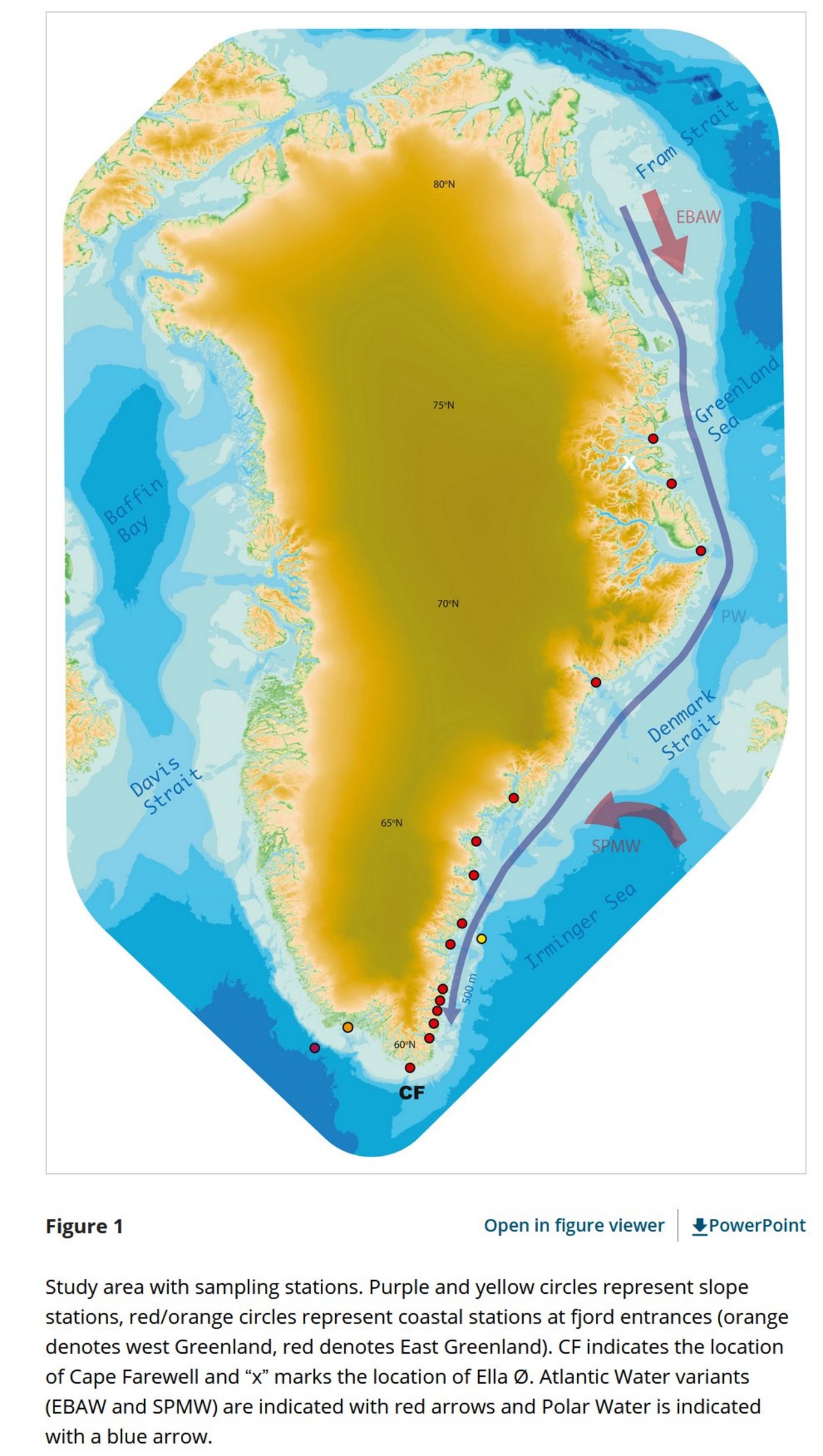Summer Hydrography Conditions at Proglacial Fjord Entrances Along East Greenland
New publication by S. Rysgaard, J. Mortensen, M. Haxen, L. C. Gillard, N. Risgaard-Petersen

Abstract:
Climate change is causing widespread melting of land and sea ice in the Arctic, leading to an increase in freshwater input to the ocean. This may have an impact on ocean circulation, marine ecosystems, and biodiversity in the region. Our findings provide new insights into the summer hydrography conditions at proglacial fjord entrances along large parts of the east coast of Greenland. As most freshwater exits the Arctic Ocean through Fram Strait this study focuses on understanding the origin of spatial distribution of temperature and freshwater in the coastal waters in East Greenland. We find that Polar Water and the Atlantic Water variants (Eurasian Basin Atlantic Water/Subpolar Mode Water) dominate coastal waters north and south of Denmark Strait, respectively, and that coastal waters are influenced by advected meltwater from the Arctic Ocean, glacier meltwater and local precipitation. Combining hydrographic observations, water isotope data, and water source fraction analysis, we show that glacier meltwaters can be detected at fjord entrances and down to approximately 200 m. Integrated over the upper 200 m of the water column, glacial meltwater account for approximately 9%, precipitation for around 8% and Polar Water (including sea ice melt) for approximately 83% of the freshwater observed along the East Greenland coast. Below 200 m, Atlantic Water variants dominate the entire coastal section. The freshwater along East Greenland stays close to the coast and we could not detect any glacier meltwater at the slope.
